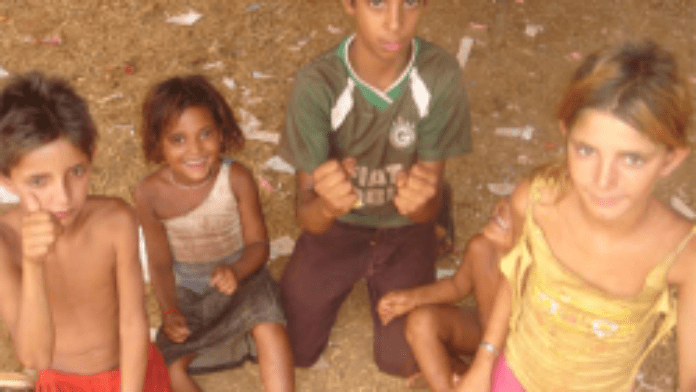
As violence continues to force an average of 60,000 Iraqis from their homes every month, according to the UN refugee agency (UNHCR), aid agencies are warning that limited access to the displaced is causing a deterioration of their living conditions, and with cold winter months upon them, the situation is likely to get even worse.
“We expect the situation to worsen. Winter is approaching and many displaced families are still without blankets and heaters. Children don’t have enough clothes to protect themselves,” Mayada Marouf, spokeswoman for non-governmental organization Keeping Children Alive (KCA), said.
The major problems facing aid agencies working to support internally displaced persons (IDPs) in Iraq is determining exactly how many IDPs there are, where they are, and then how to safely reach them.
UNHCR estimates that more than more than 4.4 million Iraqis have been forced to flee their homes. Many fled before the US-led war on Iraq began in 2003; and as many have fled since sectarian violence escalated following an attack in February 2006. The UN agency says that some 2.2 million Iraqis are internally displaced, while more than 2.2 million have fled to neighbouring states, particularly Syria (about 1.2 million) and Jordan (up to 750,000).
Accurate figures hard to obtain
”We expect the situation to worsen. Winter is approaching and many displaced families are still without blankets and heaters. Children don’t have enough clothes to protect themselves.”
“Obtaining accurate figures on the number of displaced in Iraq is difficult in the present climate, with ongoing threats in the north and changed movements due to visa restrictions at the Syrian border,” Anita Raman, associate reporting officer for UNHCR Iraq Operation, said.
“Many different actors are involved in providing the right facts and figures on displacement in the whole of Iraq and, given the security situation, no agency is capable of surveying all the displaced people in each province. In recent weeks the numbers of internally displaced people in the centre and south has increased, partly due to new displacement and partly due to better registration and data entry,” Raman added.
According to a report released on 4 November by the Iraqi Red Crescent, the number of IDPs in Iraq is now greater than the number of Iraqis who have fled the country altogether. “Nearly 2.3 million people have been driven from their neighbourhoods [internally displaced] as Iraq is increasingly carved up along sectarian lines,” the report said.
Cold sets in
Internally displaced people in Iraq
Northern provinces 800,900
Central provinces 740,500
Southern provinces 714,600
Total 2,256,000
Source: UNHCR (September 2007)
With 5,000 employees and 95,000 volunteers working in 365 offices in all 18 of Iraq’s provinces, the Red Crescent has been working closely with displaced families in Iraq and is considered the main agency delivering supplies in higher risk areas. It too is warning of the dire consequences of not reaching the most vulnerable IDPs living in temporary camps as temperatures continue to drop.
“About 80 percent of the country’s displaced people are women and children under the age of 12 and many are not able to find permanent housing,” a senior Red Crescent official said on condition of anonymity.
Baghdad currently has average high temperatures of 25 degrees Celsius and lows of around 8 degrees Celsius, with occasional nights dipping below zero.
Compounding deteriorating weather conditions for those living in abandoned buildings or temporary camps is ongoing insecurity, which prevents aid workers gaining access to many IDPs.
“A huge number of desperate Iraqis are still displaced and many of them are in places where aid agencies cannot access because of insecurity,” Fatah Ahmed, spokesman for Iraqi Aid Association (IAA), said.
“Displaced families need urgent assistance, especially in the southern provinces,” Ahmed added.
Ahmed said the main needs for displaced families in Iraq are tents, potable water, food parcels, working sewage systems and health care provisions. “Of course, education is another priority but how can children study without having had at least their breakfast in the morning?”
Education for displaced
Aid agencies, such as the Iraqi Red Crescent, say they are struggling to reach the increasing numbers of displaced people in Iraq
According to the UN Children’s Fund (UNICEF), approximately 50 percent of the displaced are children under 18 – amounting to over half a million children. And at least 220,000 are of school age.
“Iraqi children, those who have been displaced and those unable to flee their areas, are only receiving a fraction of the support they need,” Claire Hajaj, communications officer with UNICEF in Iraq, said.
“Displaced children have a particularly hard time accessing schools, water supplies and medical care. Many move without proper papers, creating bureaucratic hurdles in their new areas,” Hajaj added. “Displaced families struggle to find work, push children into poverty and make them vulnerable to child labour or other harmful forms of exploitation. And some children even become separated from their families during their move.”
Hajaj said education has been a big concern for displaced children, causing problems for the displaced and host communities alike. “Many schools are being overwhelmed by an influx of displaced students. Often, there’s simply not enough space to accommodate them all.”

